The last attempt on the best CD transport I am able to build
The Bread-Board Monster Killer
Conceived be Lampizator on July 23rd 2010
Sonically - as a
spdif transport this is better than any traditional disc spinning
transport, including the CEC TL1x, Theta Data, Esoteric P1, Teac VRDS
X25, Mephisto 1 and Mephisto 2, North Star, etc.
There is simply
more pleasure from Squeezebox based transport - deeper, cleaner, faster
bass, better space definition, better 3-d effect, more goosebumps.
For me there is
no going back.
Here is my last
attempt on Hot Rodding the Squeezebox Duet.
- all power points on PCB with Oscon upgrade caps from the top
quality SEPC series
- SPDIF output totally new and rebuilt from another stealing
point (output through the top quality silver mica Crystal
capacitor from space program)
- Superclock added (MR Clock Gen2) instead of old cheap quartz
- Power supply added instead of the impulse wall-wart -
separate secondary from the main transformer, regulated and filtered
(9VDC)
- Separate power supply for the superclock- regulated and filtered
(9VDC)
- Separate regulated filtered power supply for tubes heaters (14
VDC Series heating)
- Output stage built like Lampizator SRPP circuit, using
superb PCC88 Tesla tubes
- Choke filtered power supply for anodes of tubes (200V)
- Tube rectification - dual diode half bridge using Russian 5c4s
- Belden 75 OHm coax cable with silver center and silver plated
screen for SPDIF
- 100 VA toroid transformer custom made for Lampizator projects
- Paper in Oil output caps - TELPOD 2uF - military Warsaw Pact
standard
- Output volume adjusted to 3 V pp
- IEC power input socket (Shurter - Swiss made)
- Lampizator connector edge back-plate with RCA sockets and power
switch.
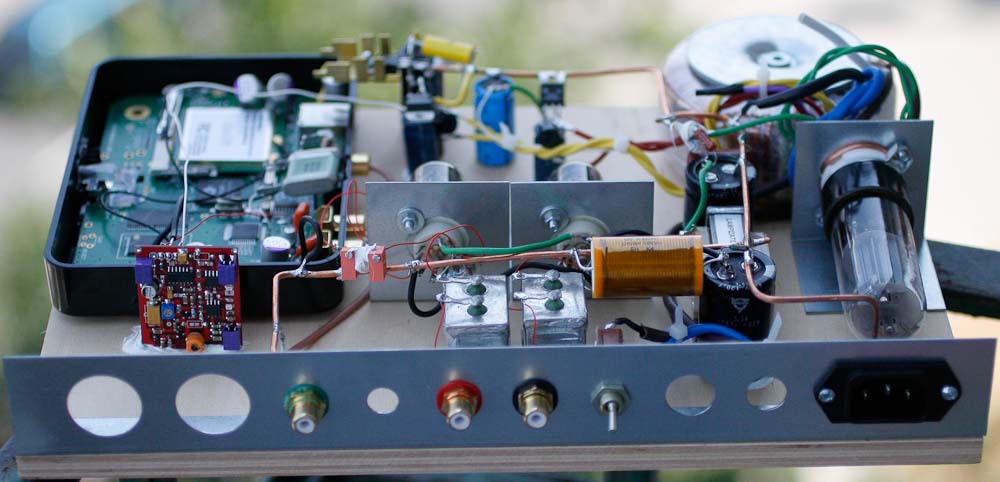
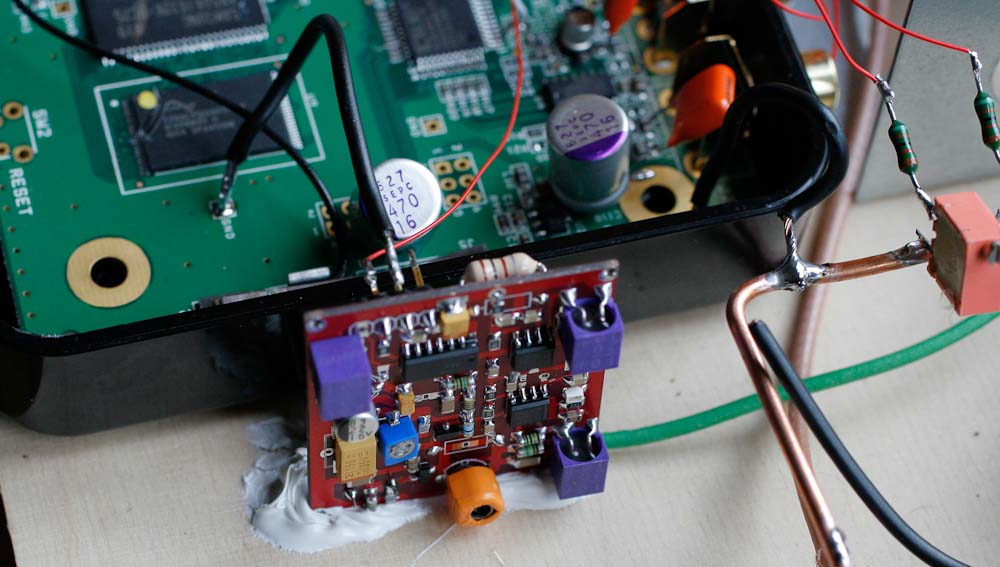
Above - the superclock. Black wire goes to GND, red wire is the actual
clock signal of 11,something Mega Hetrz.

Above- Oscons in critical locations. Especially the right one is
critical for SPDIF signal. Also use Black Gates there. The left one is
important for the DAC section.
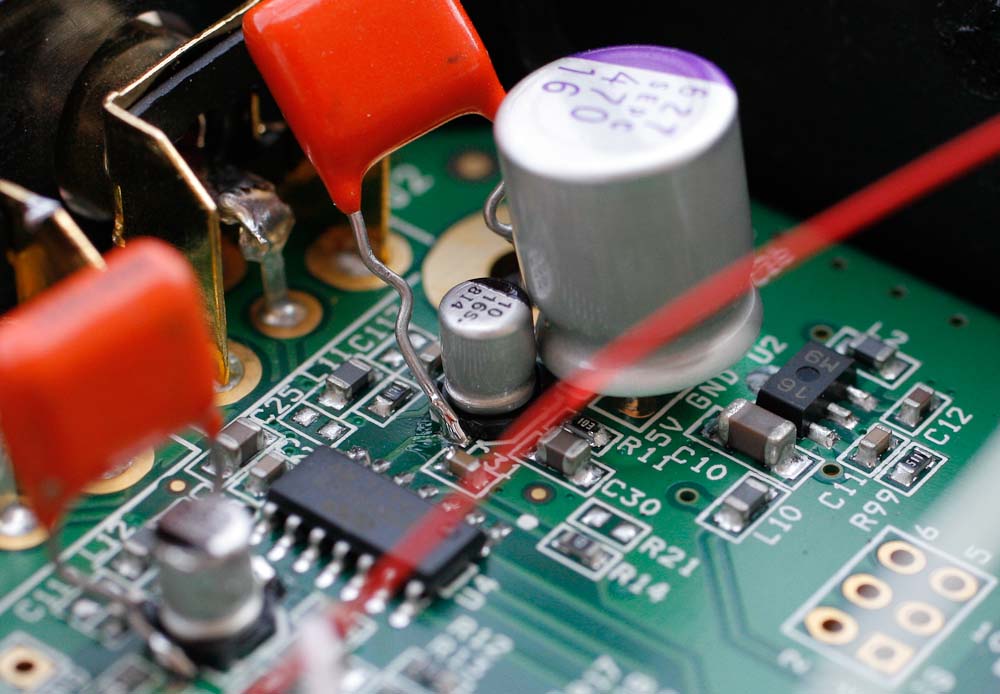
I soldered that oscon in the empty holes marked 5V and GND. It is
for Wolfson DAC supply
Orange caps are additional bypasses across DAC output caps (SMD
electrolytes. I kept them and added Vishat MKP 220nF/63V across
the soldering points.)
Desoldering the electrolytes results in PCB track damage. I dont advise
it.
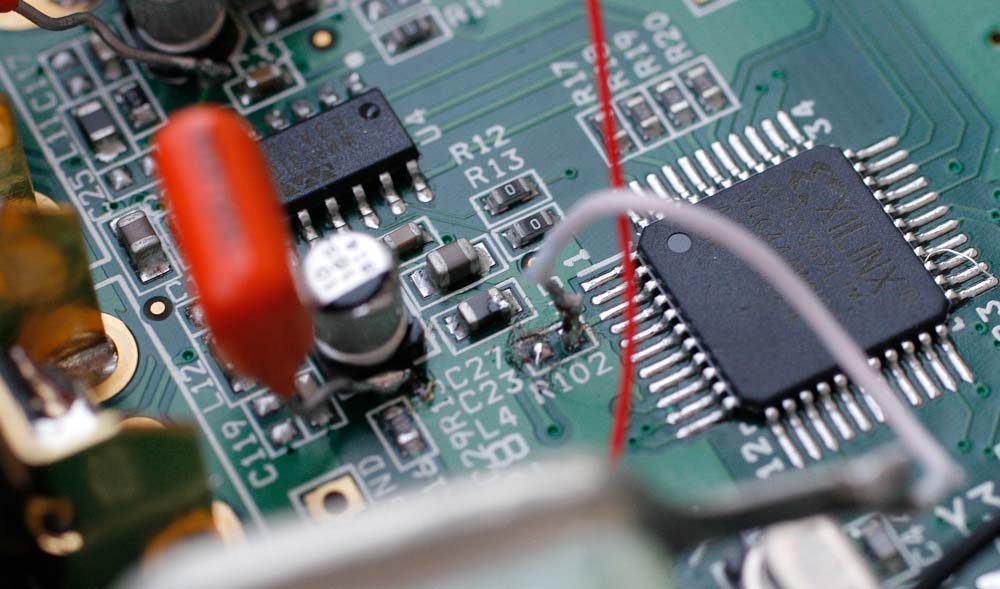
Above - R102 is removed and white wire goes to new spdif stealing
point.
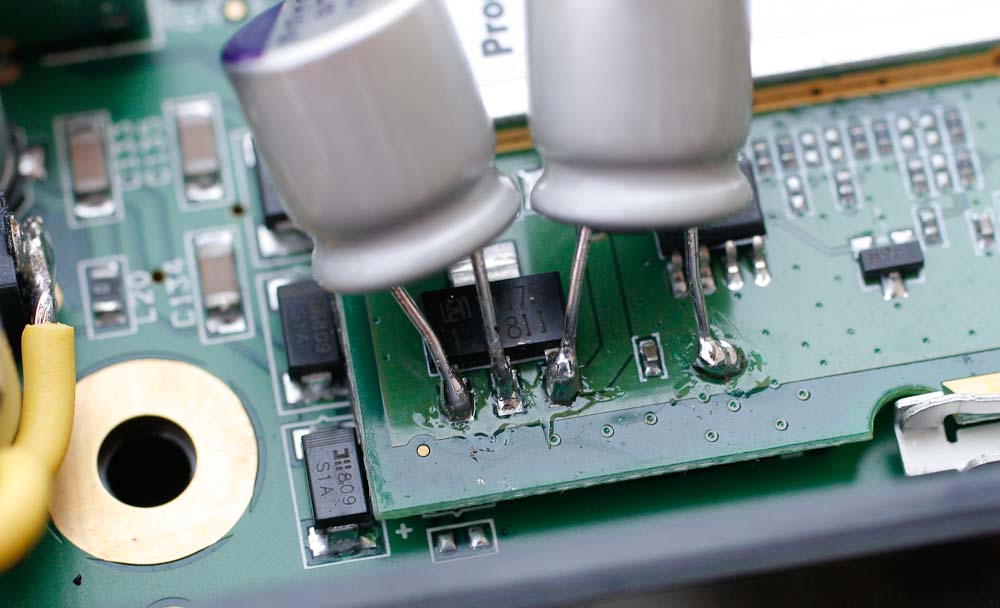
Above- two important oscons on the regulator. Left oscon conects to the
input side of the regulator and right one to the output. The right leg
of the right one is negative and is soldered to GND. I scraped off some
green lacquer to get the close-by GND connection.
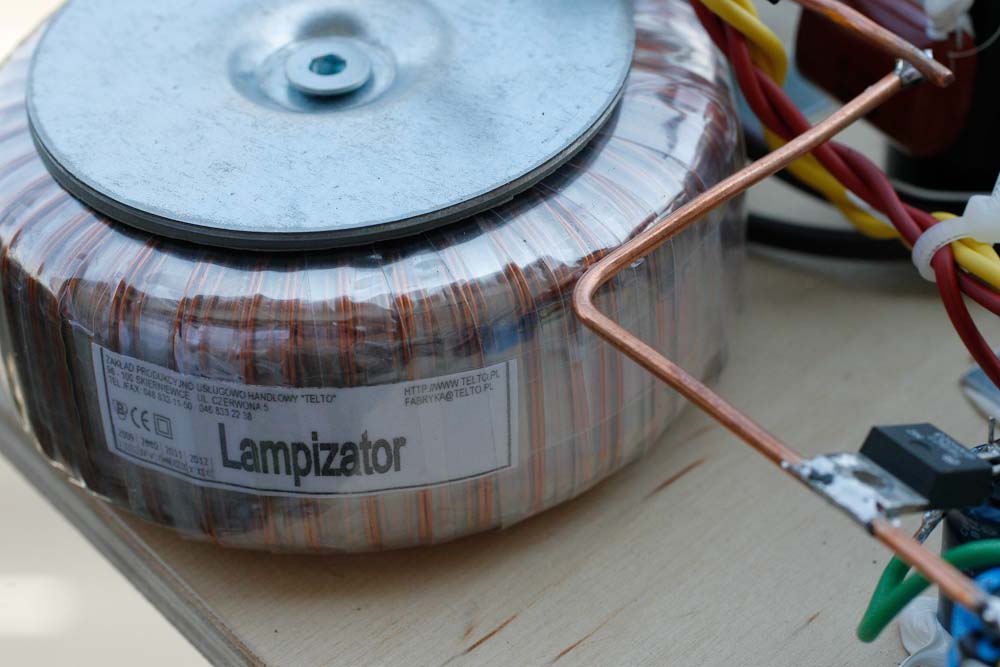
This is my transformer - 100 VA core, and 6 secondary voltages for all
the possible purposes. I used all of them in this project.
\
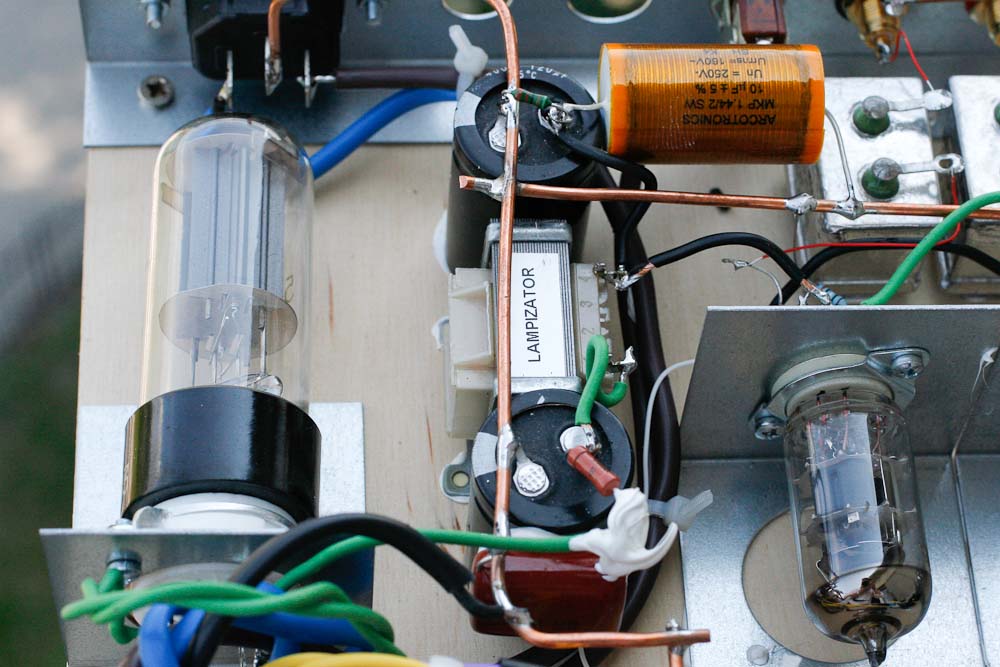
Above - the tube rectified, choke filtered anode supply.
The orange arcotronics is the final electrolyte bypass.
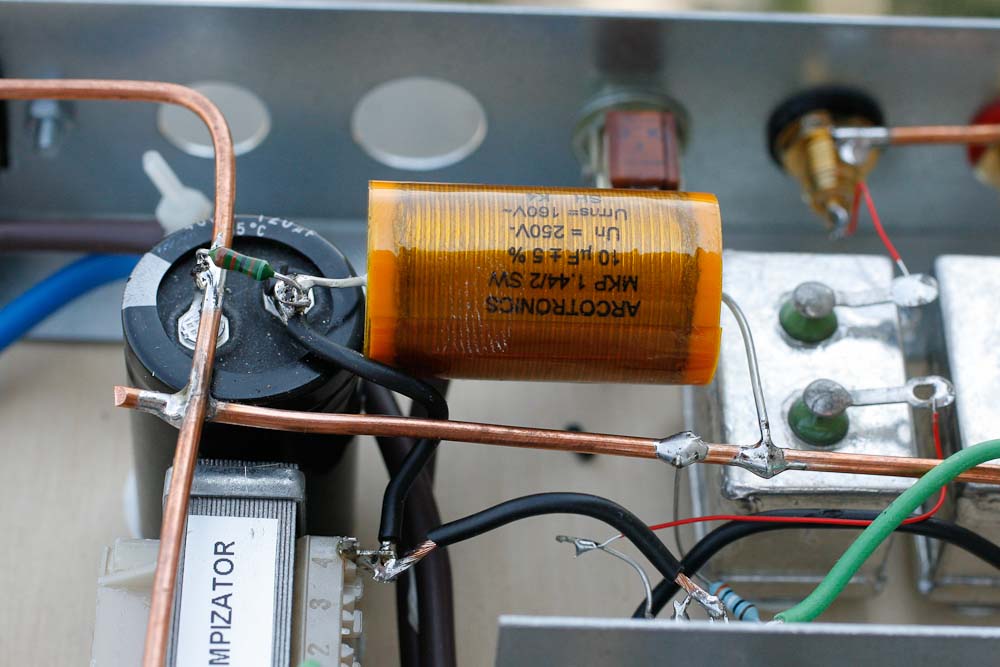
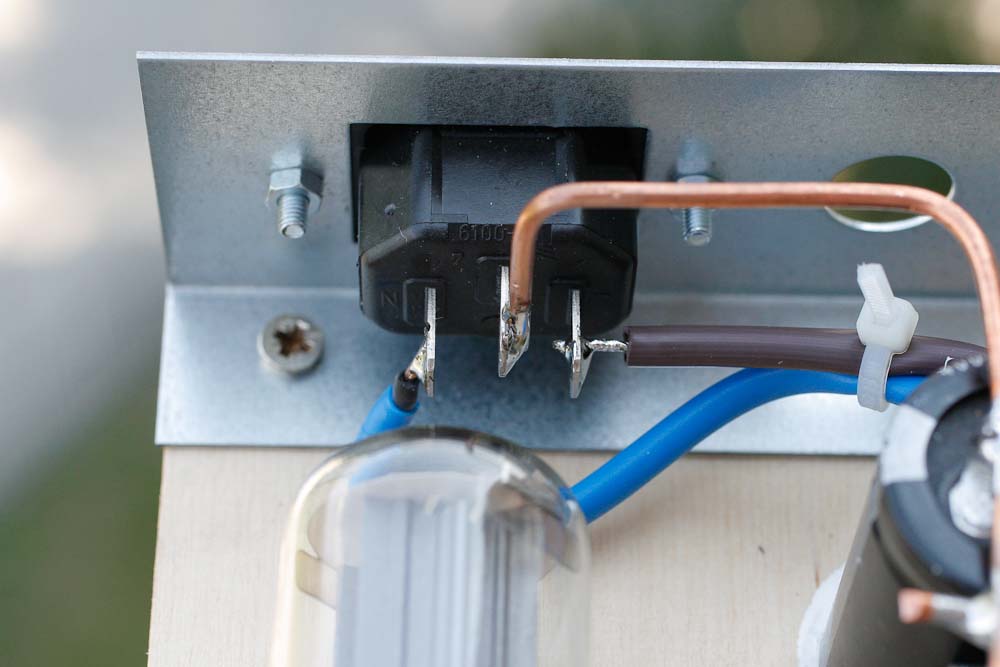
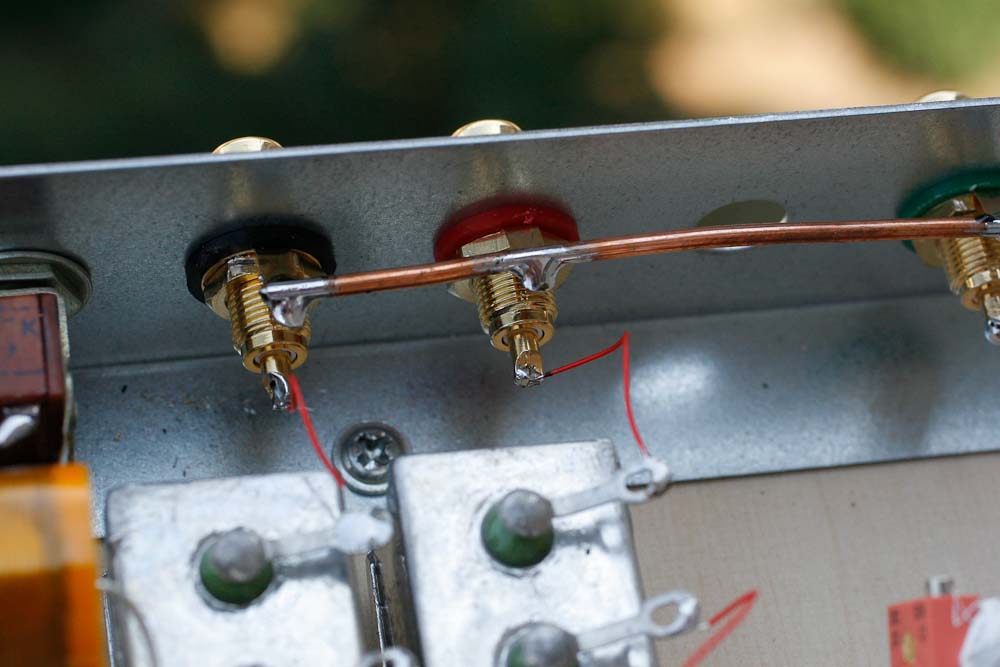
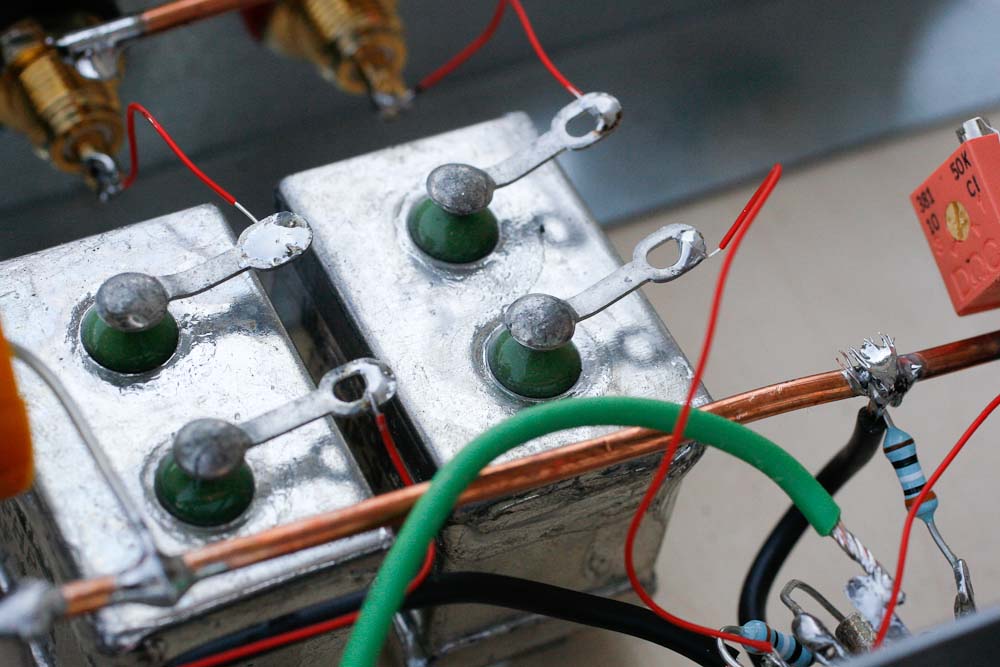
Silver cans are paper in oil capacitors for output stage of the tubes.
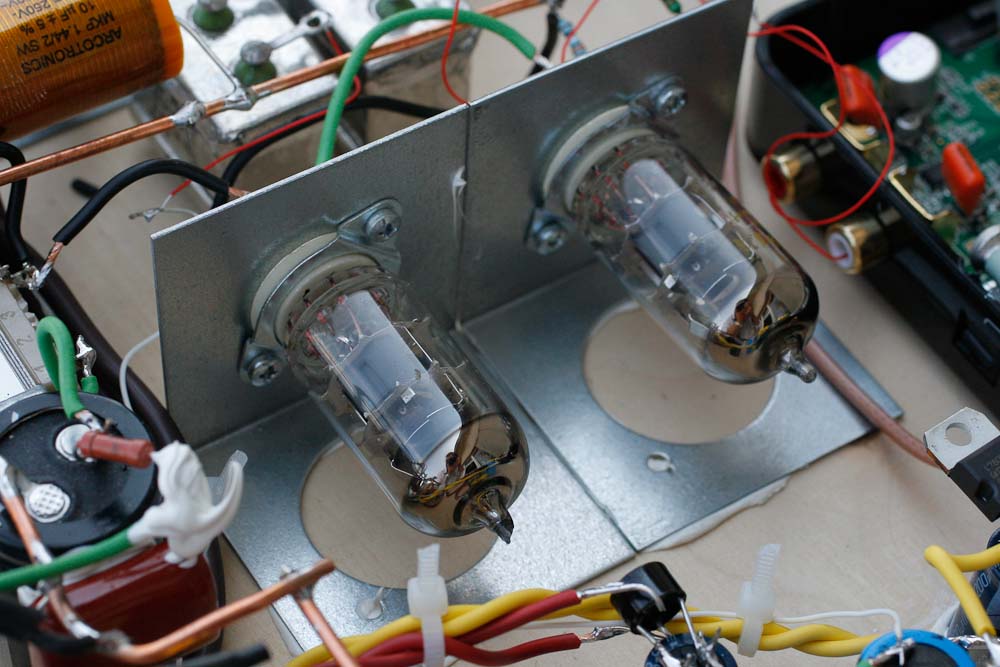
I chose the PCC88 tubes which are my favourite choice recently due to
wide availability and low price while ECXELLENT sound quality.
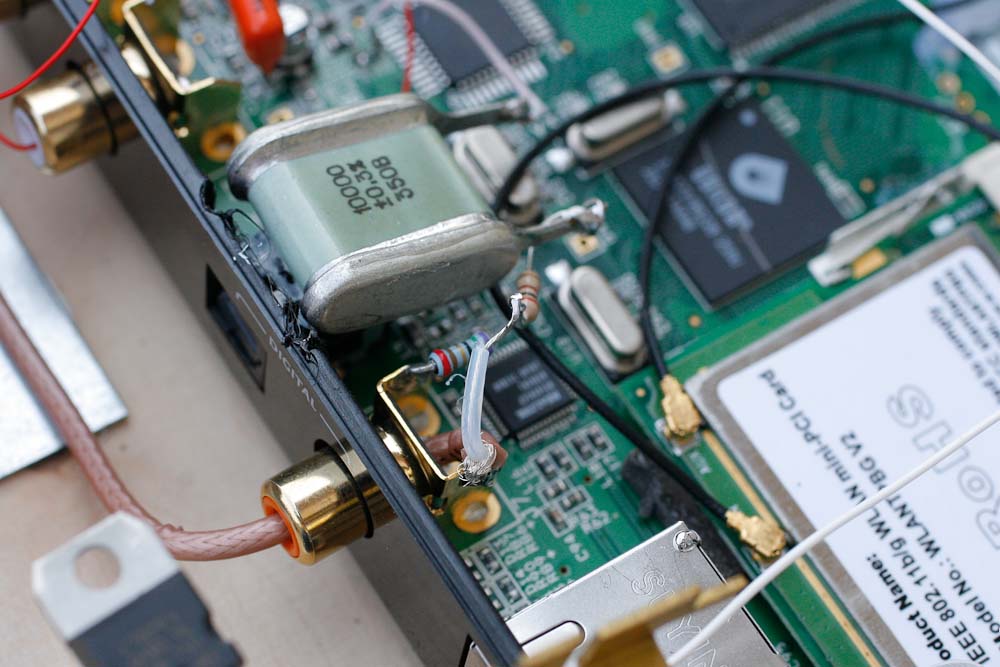
This green cap is siver-mica type, ULTIMATE hi-frequency cap. This one
is a soviet space programme type, with 10 nF and 350 V ratings. For me
- the best for SPDIF. I use them in all my DACs now too.
Look at their quality standards : TOLERANCE IS =/- 0,3 %
hahahahahahaha !!!!!
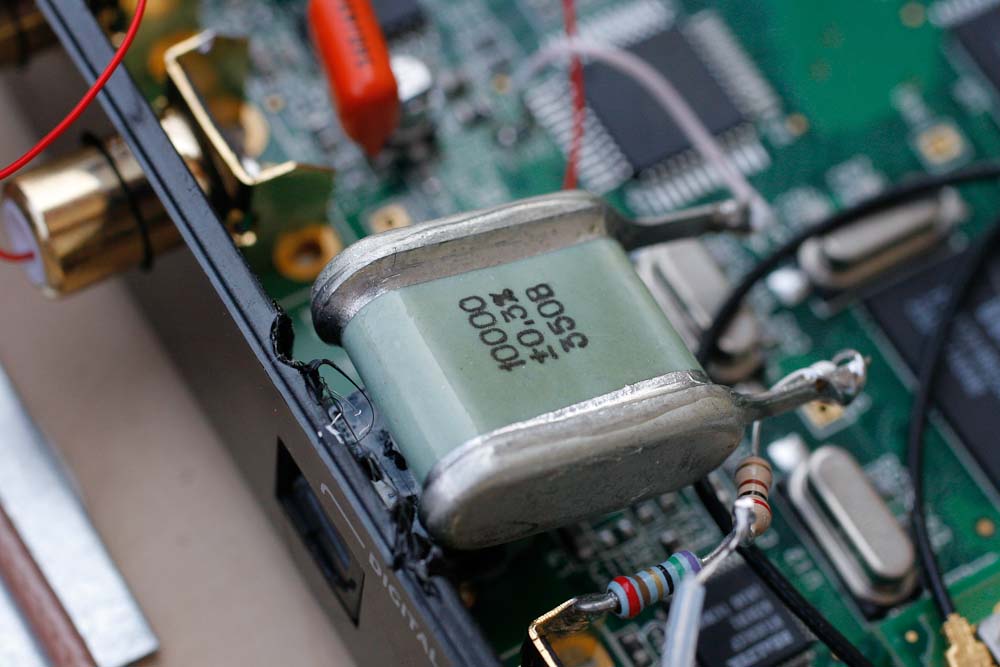
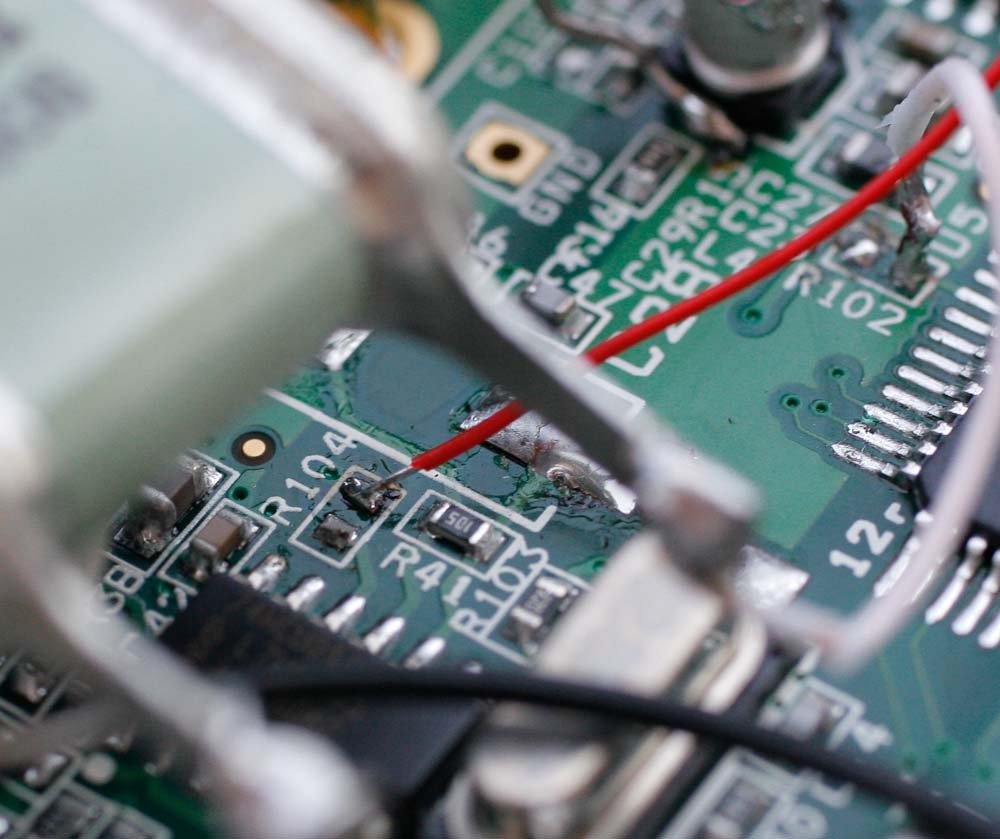
Above - the clock point of signal injection. After removing the R104.
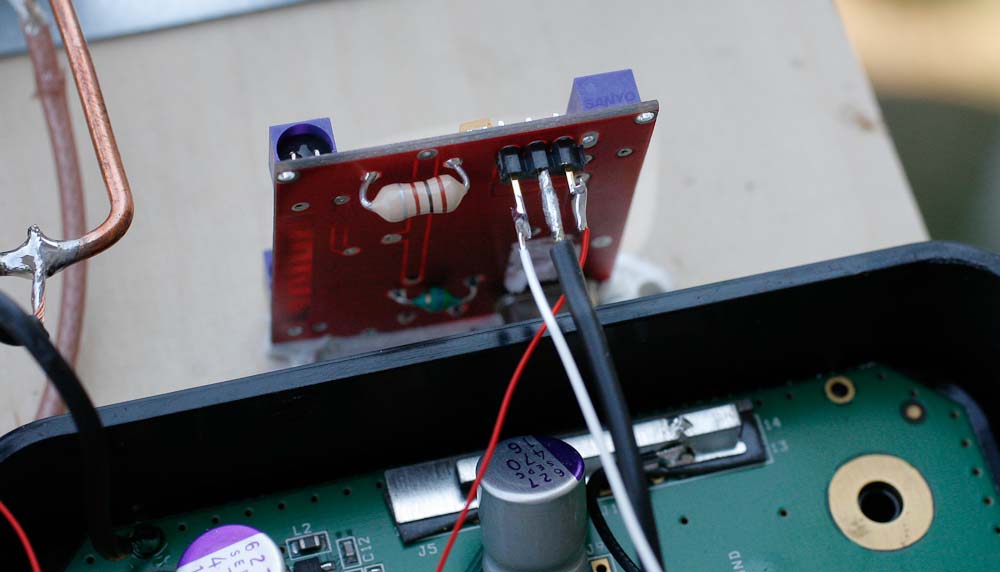
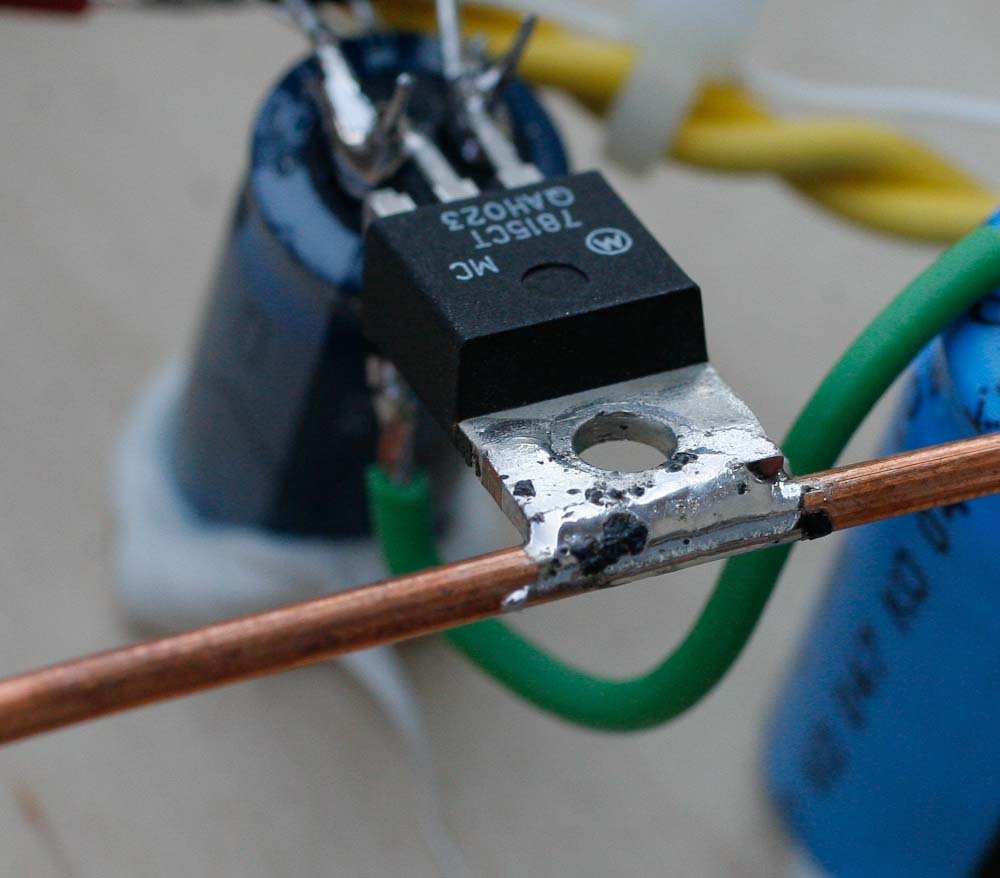
This is a cool trick. If the regulator gets too hot but not by much,
jusssst a liiiittle too hot - you can solder its "head" to the piece of
copper wire, in this case - the ground wire. It forms a) regulator
holder and b) radiator. Very good cheap trick
(providing that the regulatorhas internally grounded head. Check it
first.
Not good for diode - elevated voltage values like in 6,4 VDC circuits
for heaters.
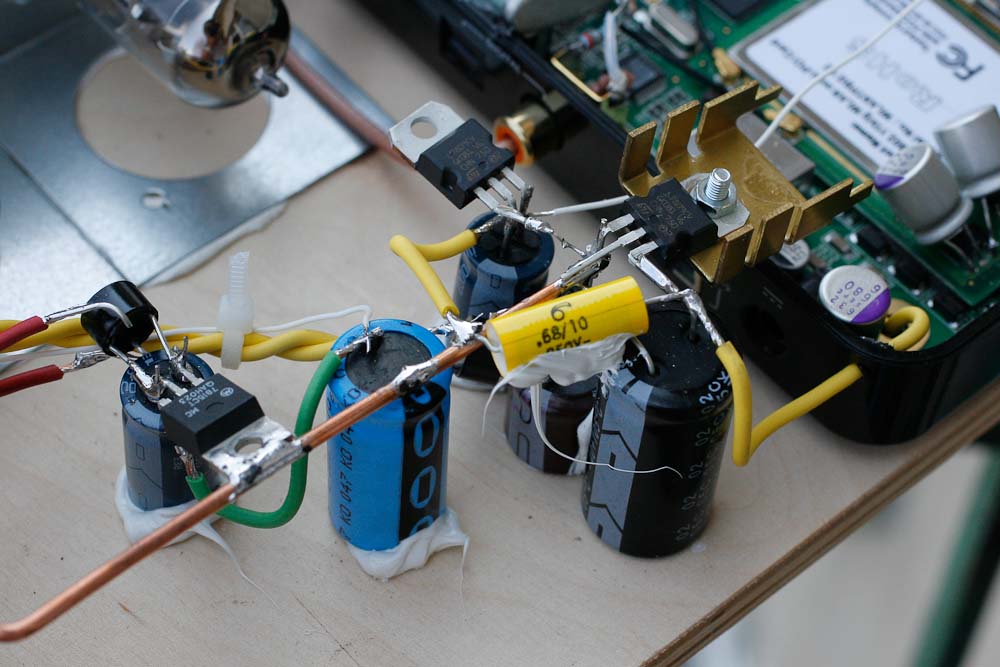
Above : three separate regulated supplies for tubes, clock and
squeezebox.
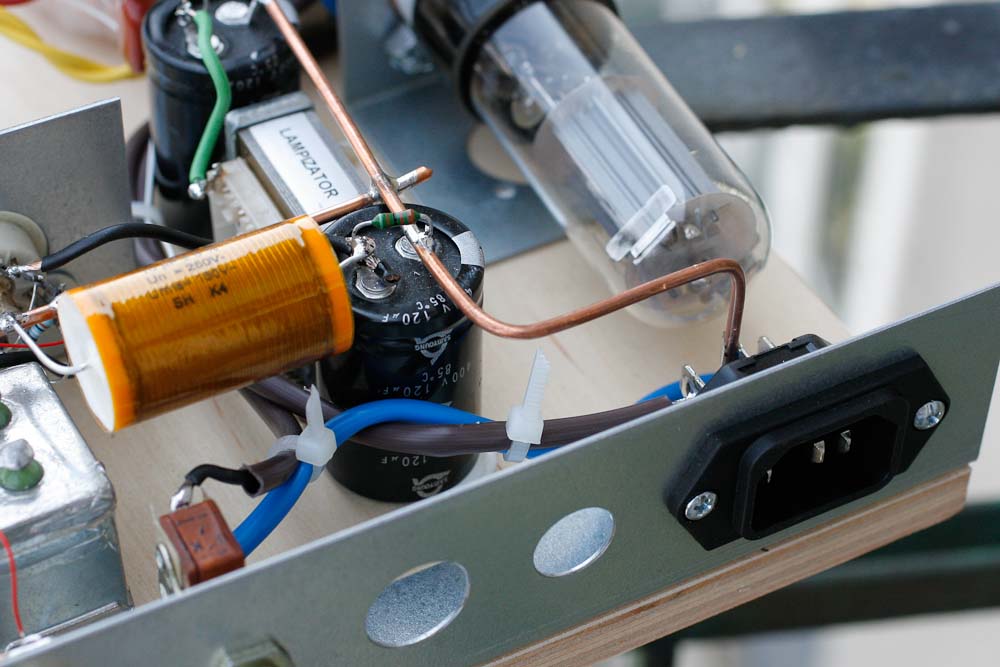
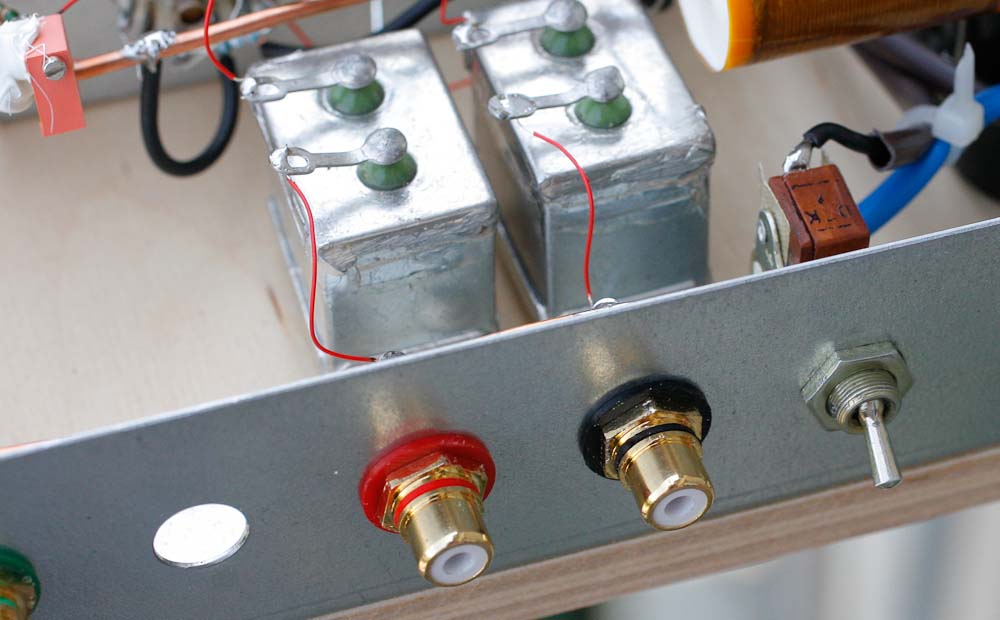
The red wires are silver in teflon. Made in USA.
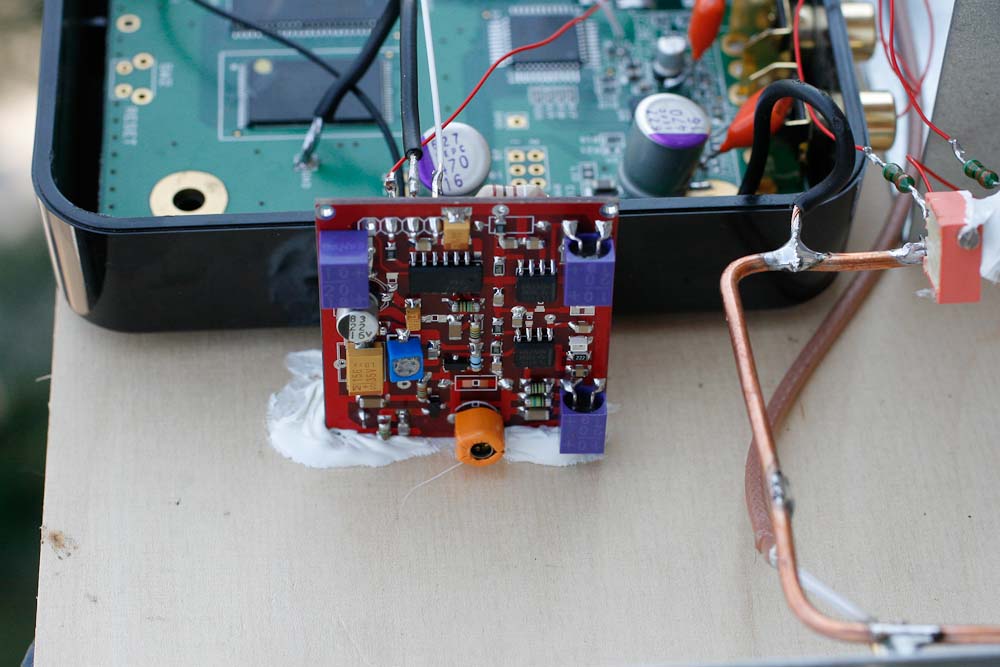

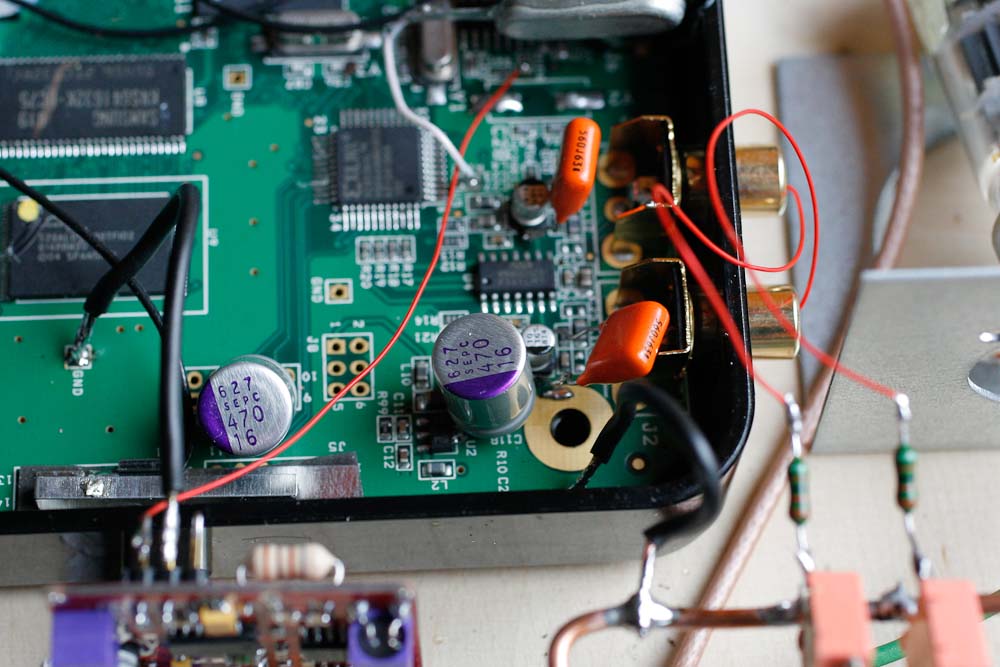
The sound from the lampized DACS is very good, although not as good as
the best separate dacs. But I could really live with it. Especially
bass is awesome (as it always is with Wolfsons)
This is a cheap one but Wolfson nevertheless.
The digital quality - when feeding external DAC - is mindblowing. It is
the best. Partially due to internal memory buffer which closes
the gap between this transport with the external DAC combo and say
Chord DAC with internal fifo memory or say a system with Genesis
Digital Lens.























